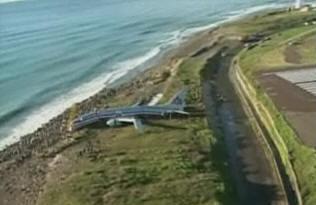
NEWSROOM
 |
NEWSROOM |
|
|
|
|
|||
|
By Mike Mitchell |
||||
 |
January 1, 2010, - An American Airlines Flight 331 departed
In the
The National Transportation Safety Board dispatched a team of
investigators to assist the government of |
|||
 |
||||
|
Two
|
||||
|
The 737-800 is also among the models replacing the McDonnell Douglas
MD-80 and MD-90 series aircraft in airline service; it burns 850 gallons
of jet fuel per hour, or about 80% of the fuel needed by an MD-80 on a
comparable flight, even while carrying more passengers than the latter.
According to the Airline Monitor, an industry publication, a 737-800
burns 4.88 gallons of fuel per seat per hour. Alaska Airlines replaced
the MD-80 with the 737-800, saving $2,000 per flight, assuming jet fuel
prices of $4 per gallon. The fuel cost of each such flight (2008 prices)
on a 737-800 is about $8,500.00.
For example, on 14 August 2008, American Airlines announced 26 orders
for the 737-800 (20 are exercised options from previously signed
contracts and six are new incremental orders) as well as accelerated
deliveries. A total of 1605 -800, and 12 -800 BBJ aircraft have been
delivered with over 1,400 unfilled orders as of April 2009. Ryanair, a
low-cost airline is one of the largest carriers of the Boeing 737-800,
operating 200 over 36 bases on over 850 routes across Europe and |
| ©AvStop Online Magazine Contact Us Return To News |
|